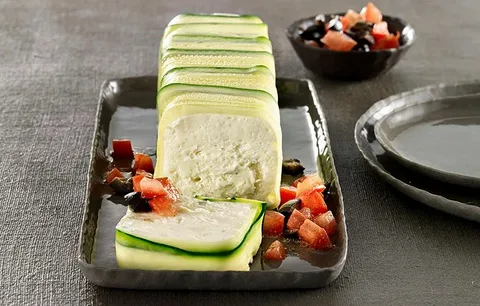Imagine slicing into a wedge of cheese that hits you with a sharp, earthy tang, like a cool breeze through an old barn. The creamy interior hides those striking blue veins, and one bite melts on your tongue, mixing sweet notes with a funky kick. That’s Gorgonzola cheese—Italy’s gift to cheese lovers everywhere.
This blue cheese has roots deep in Italian history. It comes from the Lombardy region and has charmed palates for over a thousand years. As a key player in world cuisine, it stars in salads, pastas, and even desserts.
In this guide, you’ll uncover the rich past of Gorgonzola, how it’s made from milk to mold, the differences between its main types, and smart ways to pair or cook with it. By the end, you’ll know how to pick the best piece and why this cheese deserves a spot in your kitchen.
Tracing the Roots – The History of Gorgonzola Cheese
Gorgonzola‘s story starts in the misty valleys of northern Italy. Folks say it began around the 9th century near the town of Gorgonzola, east of Milan. Legend has it a young cheesemaker left curds behind and found them forgotten for days. When he returned, the mix had turned into something special—a blue-veined delight that sparked a tradition.
Over time, this cheese spread across Lombardy and beyond. By the Middle Ages, it showed up in records as a prized food for nobles and farmers alike. Today, it stands as one of Europe’s oldest blue cheeses, blending old ways with modern tastes. If you’re curious about the history of Italian blue cheese, Gorgonzola leads the pack with its timeless appeal.
Its fame grew in the 20th century as exports boomed. Now, it graces tables from Rome to New York, proving its staying power in global dishes.
Ancient Origins and Lombardy Heritage
The tale of Gorgonzola ties back to the fertile plains of Lombardy. Shepherds in the area used local cow’s milk to craft early versions. They stored wheels in cool caves, where natural molds kicked in, creating those signature veins.
Historians point to the year 879 as a key date, when a document first mentions a cheese from the region. The town of Gorgonzola became its namesake, though production soon shifted to nearby spots like Novara for better pastures. This heritage shapes why Gorgonzola cheese originated as a rustic, hearty food for long winters.
You can still visit sites in Lombardy where families keep the old recipes alive. It’s a reminder of how simple ingredients turned into a cultural treasure.
Protection and Designation – DOP Status
In 1996, the European Union gave Gorgonzola its DOP label, short for Denominazione di Origine Protetta. This stamp means only cheese made in specific Italian zones can use the name. Producers must follow strict rules on milk sourcing and methods to keep quality high.
The DOP covers parts of Lombardy and Piedmont, ensuring fresh milk from local cows. It bans additives and sets standards for aging. Thanks to this, over 4 million wheels get produced each year under protection, with exports hitting 25% of that total.
This status guards against fakes and boosts trust. When you buy DOP Gorgonzola, you get the real deal from Italy’s heart.
The Art of the Mold – Production and Aging Process
Making Gorgonzola starts with quality milk. Artisans heat unskimmed cow’s milk to about 90 degrees Fahrenheit, then add rennet to form curds. These soft bits get cut and stirred into a smooth mass, ready for molding.
Starter cultures join the mix early. Bacteria like Lactobacillus help break down sugars and build tang. Without them, the cheese would lack its lively bite.
The process demands care at every step. Wheels form in classic round shapes, about 10 inches wide, then head to salting and early rest.
Milk Selection and Coagulation
Cows graze on fresh Lombard grasses, giving milk a subtle sweetness. Producers pick full-fat milk for that rich base. They pasteurize it gently to kill bad bugs while keeping good flavors.
Coagulation happens fast—about 30 minutes after adding rennet. The curd sets like firm custard. Workers ladle it into molds, letting whey drain slowly. This step sets the stage for the cheese’s creamy heart.
You might not think milk could transform so much, but it’s the foundation of Gorgonzola’s magic.
Introducing Penicillium Glaucum
The star mold, Penicillium glaucum, brings the blue magic. Spores get sprinkled into the curd or added with the cultures. This friendly fungus loves low oxygen and cool spots.
Once in the cheese, it spreads veins of blue-green. The aging rooms stay at 50-57 degrees Fahrenheit with 90% humidity. This setup lets the mold thrive without spoiling the wheel.
Farmers watch closely. If conditions shift, the veins fade or flavors go flat. It’s a balance that takes skill.
Piercing and Maturation
After a few days of salting, comes the pierce. Workers use thin steel rods to poke holes through the wheels. These breaths let oxygen reach the mold inside, sparking growth.
Veins form in weeks, turning the paste blue. For milder types, aging lasts 50-60 days; bolder ones go six months or more. During this time, flavors deepen— from creamy to sharp.
Flipping wheels daily keeps them even. The rind firms up, protecting the soft center. Patience here crafts the final punch.
Decoding the Spectrum – Types of Gorgonzola Cheese
Each offers a unique twist on the blue theme. Pick based on your taste—mild or bold.
Both share the same base process, but aging sets them apart. Dolce stays young and soft; piccante toughens with time.
Knowing these helps you choose right at the store or market.
Gorgonzola Dolce: The Sweet and Creamy Counterpart
This version ages just 2-3 months, keeping it spreadable. Its high moisture gives a buttery feel, with veins that are subtle. Flavors lean sweet and nutty, less bite than its sibling.
Try it with pears or honey drizzled on top. It softens salads or fills ravioli without overpowering. In Italy, folks smear it on bread for a quick snack.
Dolce suits beginners to blue cheese. Its gentle funk invites you in.
Gorgonzola Piccante: The Sharp and Robust Experience
Aged up to a year, piccante firms up and packs heat. The texture crumbles, and veins grow bold. Salt and spice rise, with an earthy edge that lingers.
This one’s for fans of intense tastes. Crumble it over grilled meats or stir into sauces for depth. The Gorgonzola Piccante flavor profile shines in bold recipes, like a spicy risotto.
It demands respect but rewards with complexity.
Identifying Quality: What to Look for When Buying
Scan the rind first—it should be thin and straw-colored, not cracked. Veins need to glow blue-green; avoid black spots that signal spoilage.
Press the center: dolce yields softly, piccante holds firm. Smell for clean pungency, not sour rot. Check labels for DOP to ensure authenticity.
Store it wrapped in foil in your fridge’s cheese drawer. It lasts weeks if you keep air out. These tips help you grab top-notch Gorgonzola every time.
- Look for even marbling inside.
- Opt for pieces cut fresh from the wheel.
- Avoid pre-packaged if possible for better taste.
Culinary Mastery – Pairing and Cooking with Gorgonzola Cheese
Gorgonzola plays well with many foods. Its funk cuts through sweets or stands up to savories. Start simple, then experiment.
Wines matter too—pick ones that match the cheese’s strength. Beers work for casual bites.
In the kitchen, heat tames its edge, making it a star ingredient.
Classic Pairings: Wine, Beer, and Condiments
For dolce, grab a sweet white like Moscato. It balances the cream. Piccante pairs with full reds, such as Barolo, to match its power.
Try nuts like walnuts—they add crunch and echo the earthiness. Figs or balsamic glaze bring sweet contrast. Beers? Go for a malty brown ale to mellow the blue.
A top chef once said, “Gorgonzola dances with bold reds, turning a simple bite into a feast.” Keep portions small to let flavors shine.
Incorporating Gorgonzola in Savory Dishes
Melt it into pasta for a creamy sauce—mix with cream and pepper. It tops pizzas, bubbling under cheese for smoky notes.
In risottos, stir at the end so it coats each grain. For steak, dollop on after grilling; the heat softens it just right. It even jazzes up burgers.
To balance its strength, add a squeeze of lemon. The acid lifts the richness without clashing.
- Whip up a quick sauce: 4 oz cheese, 1/2 cup cream, heat gently.
- Use in stuffed mushrooms for party apps.
- Grate over roasted veggies for umami boost.
Dessert Applications – The Unexpected Treat
Who says blue cheese skips sweets? Blend dolce into cheesecake for a tangy twist. It pairs with dark chocolate, where the funk meets bitter depth.
Drizzle honey over a wedge with fresh berries. Or bake it into scones for tea time surprise. These uses show Gorgonzola’s range.
Start small if you’re new to this combo. The contrast often wins fans over.
Conclusion: Savoring the Legacy
Gorgonzola cheese blends ancient Italian roots with modern flair. From Lombardy caves to your plate, its DOP protection keeps traditions alive. The dolce offers creamy ease, while piccante delivers sharp thrill—both showcase the magic of Penicillium mold.
Remember these keys: Hunt for DOP labels and fresh veins when shopping. Store cool and wrapped to hold flavors. Pair wisely, and don’t fear melting it into meals.





